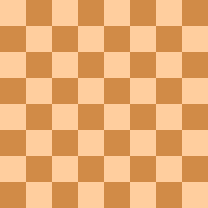London System
| Moves | 1.d4 and 2.Bf4 or 2.Nf3 & 3.Bf4 |
|---|---|
| Named after | 1922 London tournament |
| Parent | Queen's Pawn Game |
The London System is a chess opening that begins with 1.d4 and 2.Bf4 or 2.Nf3 & 3.Bf4. It is a "system" opening that can be used against virtually any black defense and thus comprises a smaller body of opening theory than many other openings. The London System is one of the "Queen's Pawn Game", where White opens with 1.d4 but doesn't play the Queen's Gambit. It normally results in a closed game.
Sverre Johnsen and Vlatko Kovačević, in the introduction to their 2005 book Win with the London System, state:
Basically the London is a set of solid lines where after 1.d4 White quickly develops his dark-squared bishop to f4 and normally bolsters his centre with [pawns on] c3 and e3 rather than expanding. Although it has the potential for a quick kingside attack, the white forces are generally flexible enough to engage in a battle anywhere on the board. Historically it developed into a system mainly from three variations:
The corresponding Encyclopaedia of Chess Openings codes are D02, A46, and A48.
If White is going to play the London System, it is now thought to be more accurate to play 2.Bf4 instead of 2.Nf3 and 3.Bf4 for a variety of reasons.[1]
| This article uses algebraic notation to describe chess moves. |
Description
The line came into fashion in the 1922 London tournament as a way of meeting hypermodern setups. The line gives White a solid position, and critics of the line refer to it as the "old man’s variation" or the "boring system".[2] Even so, the opening can lead to sharp attacks and Vlatko Kovačević and David Bronstein are among the sharp tactical players who have played the London System.[3]
Early play
1.d4 d5 2.Nf3 Nf6 3.Bf4
This position can also be reached via 1.d4 Nf6 2.Nf3 d5 3.Bf4. Black usually plays either 3...c5, 3...e6, 3...Bf5, 3...c6, 3...g6, or 3...Nc6.
1.d4 Nf6 2.Nf3 e6 3.Bf4
Black usually plays either 3...b6, 3...c5, or 3...d5, transposing above.
1.d4 Nf6 2.Nf3 g6 3.Bf4
Play often goes 3...Bg7 4.e3 d6 5.Be2 0-0 6.0-0. As is usual in the King's Indian, Black can strike in the center with ...c5 or ...e5. After 6...c5 7.c3, Black often plays either 7...b6, 7...Qb6, 7...Nc6, 7...Be6, or 7...cxd4. Black can prepare ...e5 in a number of ways, usually starting with either 6...Nbd7, 6...Nc6, or 6...Nfd7.
Example game
Kotov vs. Petrosian, Gagra 1952
- 1.Nf3 Nf6 2.d4 g6 3.Bf4 Bg7 4.e3 0-0 5.Nbd2 c5 6.c3 cxd4 7.exd4 Nc6 8.h3 d6 9.Nc4 b5 10.Ne3 b4 11.d5 bxc3 12.dxc6 cxb2 13.Rb1 Ne4 14.Bd3 Qa5+ 15.Kf1 Ba6 16.Nc4 Bxc4 17.Bxc4 Nc3 18.Qd2 Qa4 19.Bd3 Nxb1 20.Bxb1 Rfc8 21.g3 Rxc6 22.Kg2 Rac8 23.Bh6 Rc1 24.Bxg7 Rxh1 25.Kxh1 Rc1+ 26.Kg2 Rxb1 27.Qh6 Qd1 28.g4 Qh1+ 29.Kg3 Rg1+ 0–1[4]
See also
References
- ↑ Lua error in package.lua at line 80: module 'strict' not found.
- ↑ Lua error in package.lua at line 80: module 'strict' not found.
- ↑ Lua error in package.lua at line 80: module 'strict' not found.
- ↑ Alexander Kotov vs Tigran Vartanovich Petrosian (1952) "Kotov Guard"
Further reading
| The Wikibook Chess Opening Theory has a page on the topic of: London System |
- Lua error in package.lua at line 80: module 'strict' not found.
